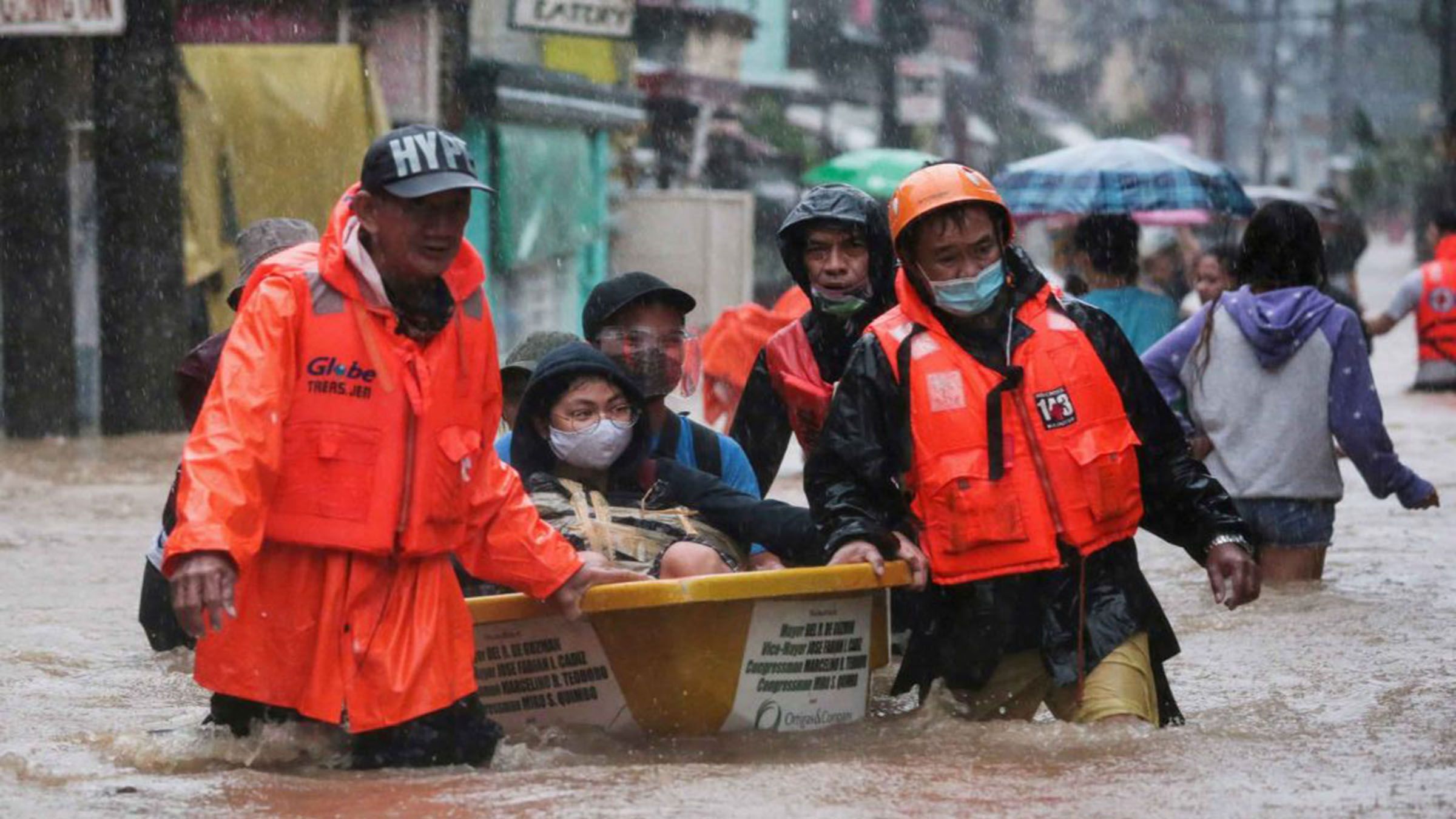
Disaster response is a critical aspect of emergency management that involves preparing for, responding to, and recovering from natural or man-made disasters. Effective disaster response can save lives, reduce suffering, and minimize economic loss. But what exactly does it entail? Disaster response includes a range of activities such as search and rescue, medical care, shelter provision, and infrastructure repair. It requires coordination among various agencies, including government bodies, non-profits, and community groups. Understanding disaster response helps communities become more resilient and better prepared for future emergencies. Let's dive into 40 essential facts that shed light on this vital subject.
Key Takeaways:
- Disaster response involves first responders, technology, international cooperation, community involvement, mental health support, environmental impact, economic resilience, and innovative solutions to save lives and minimize damage.
- Communities, technology, and international organizations work together to respond to disasters, protect the environment, support mental health, and build economic resilience for a more effective and efficient disaster response.
Understanding Disaster Response
Disaster response is a critical aspect of emergency management. It involves coordinated efforts to save lives, reduce suffering, and minimize property damage. Here are some fascinating facts about disaster response.
-
First Responders: Police, firefighters, and emergency medical personnel are usually the first on the scene during a disaster. Their quick actions can save lives and prevent further harm.
-
FEMA: The Federal Emergency Management Agency (FEMA) was created in 1979 to coordinate the federal government's response to natural and man-made disasters.
-
Incident Command System (ICS): This standardized approach to command, control, and coordination is used by emergency responders to manage incidents of all sizes and types.
-
Search and Rescue (SAR): Specialized teams are trained to locate and rescue people trapped in hazardous conditions, such as collapsed buildings or flooded areas.
-
Disaster Medical Assistance Teams (DMAT): These teams provide medical care during disasters, often setting up temporary hospitals to treat the injured.
Technology in Disaster Response
Technology plays a crucial role in modern disaster response. From communication tools to data analysis, tech innovations help responders work more efficiently.
-
Drones: Unmanned aerial vehicles (UAVs) are used to survey disaster areas, providing real-time images and data to responders.
-
GIS Mapping: Geographic Information Systems (GIS) help map affected areas, track resources, and plan evacuation routes.
-
Social Media: Platforms like Twitter and Facebook are used to disseminate information quickly and coordinate relief efforts.
-
Early Warning Systems: Technologies like earthquake early warning systems can provide crucial seconds of advance notice, allowing people to take protective actions.
-
Satellite Imagery: Satellites provide detailed images of disaster zones, helping responders assess damage and plan their actions.
International Disaster Response
Disasters don't respect borders. International cooperation is often necessary to provide effective relief and recovery.
-
United Nations Office for the Coordination of Humanitarian Affairs (OCHA): This UN body coordinates international humanitarian response efforts.
-
International Red Cross and Red Crescent Movement: These organizations provide emergency assistance, disaster relief, and education in communities affected by disasters.
-
USAID: The United States Agency for International Development (USAID) provides disaster assistance worldwide, helping countries recover and rebuild.
-
Global Disaster Alert and Coordination System (GDACS): This system provides real-time alerts about natural disasters and coordinates international response efforts.
-
Humanitarian Aid Workers: These individuals travel to disaster zones to provide essential services, such as medical care, food distribution, and shelter.
Community Involvement in Disaster Response
Local communities play a vital role in disaster response. Their knowledge and resources are essential for effective relief efforts.
-
Community Emergency Response Teams (CERT): These volunteer teams are trained to assist professional responders during disasters.
-
Local Knowledge: Residents often have valuable information about their community's needs and vulnerabilities, which can guide response efforts.
-
Mutual Aid Agreements: Communities often have agreements to share resources and support each other during emergencies.
-
Public Education: Teaching people how to prepare for and respond to disasters can save lives and reduce the impact of emergencies.
-
Volunteering: Many disaster response efforts rely on volunteers to provide essential services, such as distributing supplies and assisting with evacuations.
Psychological Impact of Disasters
Disasters can have a profound psychological impact on survivors and responders. Addressing mental health is a crucial part of disaster response.
-
Trauma: Experiencing a disaster can lead to post-traumatic stress disorder (PTSD) and other mental health issues.
-
Counseling Services: Providing psychological support to survivors helps them cope with the emotional aftermath of a disaster.
-
Critical Incident Stress Management (CISM): This approach helps responders deal with the stress and trauma of their work.
-
Community Support Groups: These groups provide a space for survivors to share their experiences and support each other.
-
Resilience Building: Programs that promote resilience can help communities recover more quickly from disasters.
Environmental Impact of Disasters
Disasters can cause significant environmental damage, which can have long-term effects on ecosystems and human health.
-
Pollution: Floods, hurricanes, and other disasters can release pollutants into the environment, contaminating water and soil.
-
Habitat Destruction: Natural disasters can destroy habitats, threatening wildlife and biodiversity.
-
Climate Change: Some disasters, such as wildfires and hurricanes, are becoming more frequent and severe due to climate change.
-
Reforestation: Planting trees and restoring natural habitats can help mitigate the environmental impact of disasters.
-
Sustainable Recovery: Using sustainable practices in disaster recovery can reduce environmental damage and promote long-term resilience.
Economic Impact of Disasters
Disasters can have a devastating economic impact, affecting individuals, businesses, and entire economies.
-
Property Damage: Disasters can cause billions of dollars in property damage, affecting homes, businesses, and infrastructure.
-
Insurance: Insurance can help individuals and businesses recover financially from disasters, but not everyone has adequate coverage.
-
Business Interruption: Disasters can disrupt business operations, leading to lost revenue and economic instability.
-
Government Aid: Governments often provide financial assistance to help communities recover from disasters.
-
Economic Resilience: Building economic resilience can help communities withstand and recover from the financial impact of disasters.
Innovations in Disaster Response
Innovations in disaster response are continually improving the effectiveness and efficiency of relief efforts.
-
Mobile Apps: Apps can provide real-time information, help coordinate response efforts, and connect survivors with resources.
-
3D Printing: This technology can be used to create medical supplies, temporary shelters, and other essential items during disasters.
-
Artificial Intelligence (AI): AI can analyze data to predict disasters, optimize response efforts, and improve decision-making.
-
Renewable Energy: Solar panels and other renewable energy sources can provide power during disasters, reducing reliance on traditional energy grids.
-
Robotics: Robots can assist with search and rescue, debris removal, and other tasks in hazardous environments.
The Power of Preparedness
Disaster response hinges on preparedness. Knowing the facts and having a plan can make all the difference. From understanding emergency protocols to recognizing the importance of community support, every bit of knowledge helps. First responders play a crucial role, but so do ordinary citizens. Being aware of evacuation routes, having an emergency kit, and staying informed through reliable sources can save lives.
Technology also plays a significant part in modern disaster response. Drones, satellite imagery, and social media provide real-time updates and aid in coordinating efforts. However, the human element remains irreplaceable. Volunteers, neighbors, and local organizations often become the backbone of recovery efforts.
Ultimately, disaster response is a collective effort. By staying informed and prepared, we can all contribute to a safer, more resilient community.
Frequently Asked Questions
Was this page helpful?
Our commitment to delivering trustworthy and engaging content is at the heart of what we do. Each fact on our site is contributed by real users like you, bringing a wealth of diverse insights and information. To ensure the highest standards of accuracy and reliability, our dedicated editors meticulously review each submission. This process guarantees that the facts we share are not only fascinating but also credible. Trust in our commitment to quality and authenticity as you explore and learn with us.


